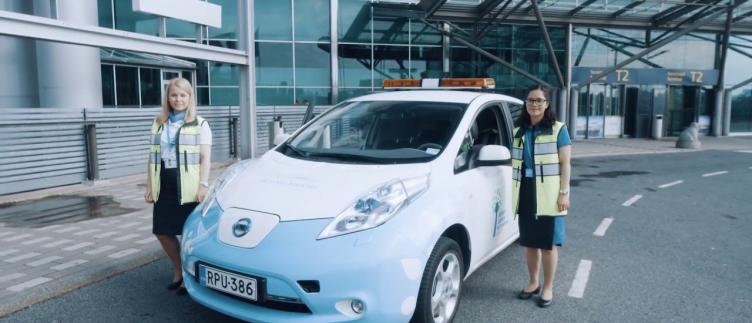Finavia is responsible for its own operations and emissions, and as the party running the airports, Finavia also has partial responsibility for the environmental impacts of the operations carried out at its airports.
- Air traffic is public transport that, like other modes of transport, burdens the environment. In Finland, the emissions and energy consumption of all modes of transport are monitored annually. The LIPASTO emissions calculation system maintained by VTT will be replaced by the LIIKE emissions calculation system during 2025.
- Globally, international regulations and agreements play a key role in reducing air traffic emissions and energy consumption. The exhaust emission limits set for aircraft also force the aircraft industry to manufacture technology that generates less emissions. As a pioneer among all modes of transport, air traffic has been part of the EU’s emissions trading scheme from early 2012. The International Civil Aviation Organization (ICAO) has developed the CORSIA (Carbon Offsetting and Reduction Scheme for International Aviation), which applies to international flights. The aim is to limit the increase of CO₂ emissions from air traffic by keeping them at the 2020 level.
- The European Union’s ReFuelEU Aviation Regulation will require aviation fuel suppliers to add a growing share of renewable and low-emission fuels to conventional kerosene, starting from 2% in 2025 and aiming for 70% by 2050.
There can be several different sources of emissions at airports
Energy consumption of jet aircraft halved
Airlines play a key role in reducing aviation emissions, as they make the purchases for their fleet and choose the latest, low-emission and energy-efficient aircraft. Modern aircraft are significantly more economical.
- The per passenger energy consumption and emissions of jet aircraft are now approximately half of the 1970 levels. Thanks to new engine and aerodynamics technologies, fuel consumption per passenger over a distance of 100 km has been reduced by up to 70%. On average, today’s wide-body long-haul aircraft consume approximately 2.5–3 litres of fuel per 100 passenger kilometres. On shorter routes, the fuel consumption is approximately 3–5 litres per 100 passenger kilometres. Long-haul flights are still relatively more efficient and low-emission than short-haul flights.
- Turboprop aircraft are the most energy-efficient option for domestic flights. About half of Finland’s domestic routes are still flown with modern turboprop aircraft, such as the ATR 72. At full load, the aircraft consumes only 2.5–3 litres of fuel per 100 passenger kilometres – even less than most passenger cars.
- Flying has become cleaner from the perspective of the individual passenger, but the overall growth of air traffic still increases global emissions. The use of biofuels is gradually becoming more common, and electric and hydrogen-powered solutions are also being developed for the industry. In addition, the aim is to manage emissions through financial means, such as emissions trading and sustainable fuel obligations.
In Finland, a large share of domestic flights are operated with turboprop aircraft.
Emissions and air quality at airports
According to environmental legislation, Finavia is required to have knowledge of the environmental impacts of its operations. The issues to be monitored annually include emissions at airports, among other things. In the airport area, atmospheric emissions are produced by several different operations and actors, such as air traffic, airside ground equipment movement, landside road traffic and the airport’s own backup power and heating plants.
- Finavia assesses aircraft emissions at its airports in accordance with the internationally defined LTO cycle (Landing and Take Off Cycle). The calculation includes emissions from take-offs and landings up to an altitude of 3,000 feet (915 metres) and the associated taxiing. In the case of a large passenger aircraft, this means take-off emissions over a distance of about six kilometres and landing emissions over a distance of about 18 kilometres from the airport. The calculation is based on the ICAO Airport Air Quality Manual (Doc 9889 ).
- Finavia also calculates the emissions of its own ground equipment on the basis of the amounts of fuel purchased at its airports. Emission calculations are based on road transport unit emission figures for passenger cars, vans and lorries.
- The total amounts of the emissions and fuel consumption of Finavia’s ground equipment and aircraft during the LTO cycle at airports are published yearly in the Annual Report.
- As part of our carbon dioxide emissions calculation, we also calculate the emissions from the value chain, i.e. Scope 3 emissions, in accordance with the GHG Protocol. Of the sources of emissions in the value chain, air traffic (fuel consumption of aircraft) is the most significant.
When calculating emissions in accordance with the LTO cycle, emissions during the take-off and landing of aircraft are also taken into account.
